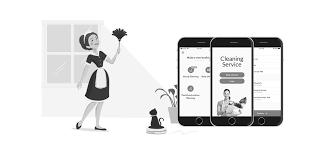
The Software as a Service (SaaS) model has transformed how businesses develop, deliver, and consume software. Unlike traditional software applications that require installation on local machines, SaaS applications are hosted in the cloud, allowing users to access them via the internet. This shift has prompted a unique development lifecycle that balances user needs, technological advancements, and market dynamics. In this guide, we’ll explore the SaaS product development lifecycle, emphasizing the Agile methodology and highlighting the role of innovative firms like Kryoverse Innovation.
Understanding the SaaS Product Development Lifecycle
The SaaS product development lifecycle can be divided into several stages, each critical for ensuring a successful product that meets customer needs. Here’s a breakdown of the lifecycle:
1. Ideation and Market Research
The first step in the SaaS development lifecycle is ideation. This involves brainstorming ideas for a product based on observed market gaps or emerging trends. During this phase, businesses conduct thorough market research to identify target audiences, understand competitors, and assess potential demand.
Key activities:
- User Interviews: Engaging potential users to gather insights about their pain points and requirements.
- Competitor Analysis: Evaluating existing solutions to identify opportunities for differentiation.
- Market Trends: Studying industry trends to align the product with future needs.
2. Planning and Requirements Gathering
Once a viable idea has been identified, the next step is to create a detailed project plan. This involves gathering functional and non-functional requirements and setting clear objectives for the product.
Key activities:
- User Stories: Defining user personas and creating user stories to capture functional requirements.
- Technical Specifications: Outlining the technical requirements, including architecture, tools, and technologies.
- Roadmapping: Developing a product roadmap that outlines key milestones and timelines.
3. Design
The design phase focuses on creating the user experience (UX) and user interface (UI) of the SaaS product. A well-thought-out design is critical to ensuring user satisfaction and engagement.
Key activities:
- Wireframing: Creating low-fidelity wireframes to visualize the layout and flow of the application.
- Prototyping: Developing interactive prototypes to test usability and gather feedback from potential users.
- UI Design: Designing the final UI elements, ensuring consistency in branding and usability.
4. Development
With a solid design in place, the development phase begins. Agile methodologies are often employed in this stage to ensure flexibility and continuous improvement.
Key activities:
- Agile Sprints: Dividing development into short sprints, typically lasting two to four weeks, to deliver incremental improvements.
- Collaboration Tools: Utilizing tools like Jira or Trello for task management and team collaboration.
- Continuous Integration: Implementing continuous integration and continuous deployment (CI/CD) practices to streamline code integration and testing.
5. Testing
Once the product has been developed, rigorous testing is essential to ensure its quality and reliability. Testing can be divided into several categories:
Key activities:
- Unit Testing: Testing individual components for functionality.
- Integration Testing: Ensuring that different modules work together seamlessly.
- User Acceptance Testing (UAT): Involving real users to validate the product against their needs.
6. Deployment
After successful testing, the product is ready for deployment. In the SaaS model, deployment often involves rolling out the application to a live environment.
Key activities:
- Cloud Hosting: Setting up the infrastructure in a cloud environment (e.g., AWS, Azure) to host the application.
- Data Migration: If applicable, migrating any necessary data from legacy systems to the new application.
- Monitoring Tools: Implementing monitoring tools to track performance, user activity, and system health post-launch.
Read More: Case Study On Chatbot Integration for CRM
7. Maintenance and Support
The lifecycle doesn’t end at deployment. Ongoing maintenance and support are critical for the long-term success of the SaaS product.
Key activities:
- Bug Fixes: Addressing any issues that arise after launch promptly.
- User Feedback: Continuously collecting user feedback to identify areas for improvement.
- Regular Updates: Rolling out updates to add new features, enhance security, and improve performance.
8. Iteration and Scaling
SaaS products must evolve to meet changing user needs and market demands. This phase involves iterating on the product based on user feedback and scaling the application as the user base grows.
Key activities:
- Feature Enhancements: Regularly updating the product with new features based on user demand and market trends.
- Scalability Planning: Ensuring the infrastructure can handle increased loads as the user base expands.
- Performance Optimization: Continuously monitoring and optimizing the application’s performance to maintain a high-quality user experience.
The Role of Agile SaaS Development
Agile methodologies play a crucial role in the SaaS product development lifecycle. By promoting flexibility, collaboration, and iterative progress, Agile enables teams to respond quickly to changing requirements and user feedback. Here’s how Agile enhances the SaaS development process:
- Frequent Feedback Loops: Agile allows for continuous user feedback, ensuring the product aligns with user needs throughout the development process.
- Adaptive Planning: Agile teams can adapt their plans based on new insights and changing market conditions, reducing the risk of developing irrelevant features.
- Collaboration: Agile emphasizes teamwork and open communication, fostering a collaborative environment that enhances creativity and problem-solving.
The Importance of Choosing the Right Partner
Choosing the right development partner is vital for the success of your SaaS project. Firms like Kryoverse Innovation bring expertise and experience in the SaaS development lifecycle, ensuring your product is not only technically sound but also aligns with market demands.
Read More: Case Study On Chatbot Integration for CRM
Conclusion
The SaaS product development lifecycle is a comprehensive process that requires careful planning, execution, and ongoing improvement. By understanding each stage and leveraging Agile methodologies, businesses can develop SaaS products that meet user needs and stand out in a competitive market.
As the SaaS landscape continues to evolve, partnering with an innovative firm like Kryoverse Innovation can provide the guidance and technical expertise needed to navigate this dynamic environment successfully. Embrace the lifecycle, iterate, and watch your SaaS product flourish!